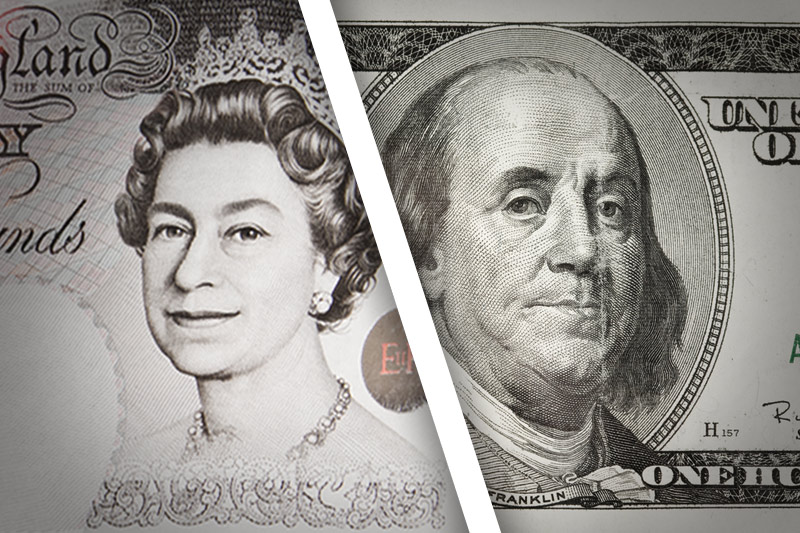Investing.com - The pound traded lower against the dollar on Thursday after U.S. growth and jobless claims reports beat expectations.
Meanwhile, dovish comments out of the Bank of England continued to soften the U.K. currency.
In U.S. trading on Thursday, GBP/USD was trading at 1.5498, down 0.18%, up from a session low of 1.5483 and off from a high of 1.5549.
Cable was likely to find support at 1.5429, Wednesday's low, and resistance at 1.5612, Monday's high.
The Commerce Department reported earlier that the U.S. gross domestic product expanded at an annual rate of 2.5% in the second quarter, above expectations for 2.2% growth and up from a preliminary estimate of 1.7%.
Separately, the Department of Labor reported that the number of individuals who filed for initial jobless claims fell to its lowest level since October of 2007 last week.
Initial jobless claims in the week ending Aug. 23 fell by 6,000 to 331,000, outpacing consensus forecasts for a decline of 5,000.
Thursday's data rekindled expectations that the Federal Reserve may begin to taper its USD85 billion monthly bond-buying program in September as opposed to later in the year.
Monetary stimulus tools such as Federal Reserve asset purchases weaken the dollar by driving down interest rates, and talk of their dismantling strengthens the greenback.
The pound, meanwhile, continued to see pressure after Bank of England Governor Mark Carney said earlier this week that monetary authorities were ready to boost stimulus programs if investor expectations for higher interest rates reach the point that they undermine recovery.
Carney has said BoE policy makers plan to keep the benchmark interest rate at a record-low 0.5% for at least three years though improving U.K. economic indicators have many betting that rates may rise sooner than expected
The pound, meanwhile, was up against the euro and up against the yen, with EUR/GBP down 0.58% at 0.8542 and GBP/JPY up 0.46% at 152.29.
On Friday, the U.S. is to round up the week with a report on manufacturing activity in Chicago and revised data from the University of Michigan on consumer sentiment as well as reports on personal income and personal spending.
The U.K. is to release reports on net lending to individuals and mortgage approvals.
Meanwhile, dovish comments out of the Bank of England continued to soften the U.K. currency.
In U.S. trading on Thursday, GBP/USD was trading at 1.5498, down 0.18%, up from a session low of 1.5483 and off from a high of 1.5549.
Cable was likely to find support at 1.5429, Wednesday's low, and resistance at 1.5612, Monday's high.
The Commerce Department reported earlier that the U.S. gross domestic product expanded at an annual rate of 2.5% in the second quarter, above expectations for 2.2% growth and up from a preliminary estimate of 1.7%.
Separately, the Department of Labor reported that the number of individuals who filed for initial jobless claims fell to its lowest level since October of 2007 last week.
Initial jobless claims in the week ending Aug. 23 fell by 6,000 to 331,000, outpacing consensus forecasts for a decline of 5,000.
Thursday's data rekindled expectations that the Federal Reserve may begin to taper its USD85 billion monthly bond-buying program in September as opposed to later in the year.
Monetary stimulus tools such as Federal Reserve asset purchases weaken the dollar by driving down interest rates, and talk of their dismantling strengthens the greenback.
The pound, meanwhile, continued to see pressure after Bank of England Governor Mark Carney said earlier this week that monetary authorities were ready to boost stimulus programs if investor expectations for higher interest rates reach the point that they undermine recovery.
Carney has said BoE policy makers plan to keep the benchmark interest rate at a record-low 0.5% for at least three years though improving U.K. economic indicators have many betting that rates may rise sooner than expected
The pound, meanwhile, was up against the euro and up against the yen, with EUR/GBP down 0.58% at 0.8542 and GBP/JPY up 0.46% at 152.29.
On Friday, the U.S. is to round up the week with a report on manufacturing activity in Chicago and revised data from the University of Michigan on consumer sentiment as well as reports on personal income and personal spending.
The U.K. is to release reports on net lending to individuals and mortgage approvals.
